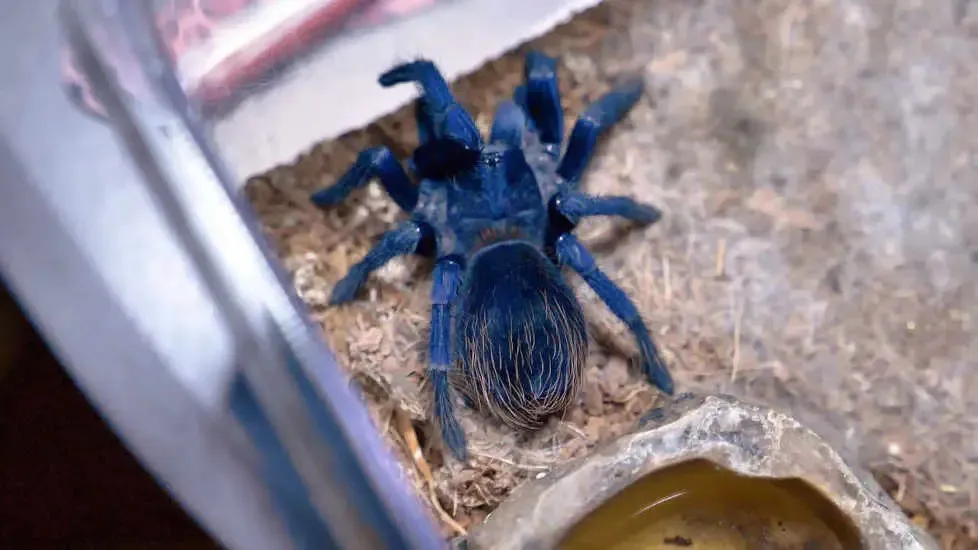What is the Brazilian Blue Tarantula?
The Brazilian Blue Tarantula (Pterinopelma sazimai) is a captivating arachnid, known for its stunning blue coloration and relatively docile temperament. Native to Brazil, these spiders have become increasingly popular in the pet trade. Their vibrant blue hue, which intensifies with maturity, sets them apart from many other tarantula species. This coloration is not just for aesthetics, it also plays a role in their camouflage within their natural habitat. Understanding this species is crucial to address the question of whether it is poisonous and to ensure responsible pet ownership. Their beauty and unique characteristics have made them a sought-after species, but potential owners should be well-informed about their care and potential risks.
Appearance and Characteristics of the Brazilian Blue Tarantula
The Brazilian Blue Tarantula is celebrated for its striking appearance. Juveniles often exhibit a more muted coloration, gradually developing their brilliant blue hues as they mature. The intensity of the blue can vary, with some individuals displaying a more vibrant shade than others. In addition to their distinctive color, these tarantulas have a robust build typical of New World tarantulas. They possess a covering of urticating hairs, which they can flick off as a defense mechanism. These hairs can cause irritation upon contact with skin or eyes, making it essential to handle them with care. The size of these tarantulas also varies, with females generally being larger than males. It’s important to note these features when considering this tarantula as a pet, as proper care and handling are essential to their well-being and your safety.
Origin and Habitat of Brazilian Blue Tarantulas
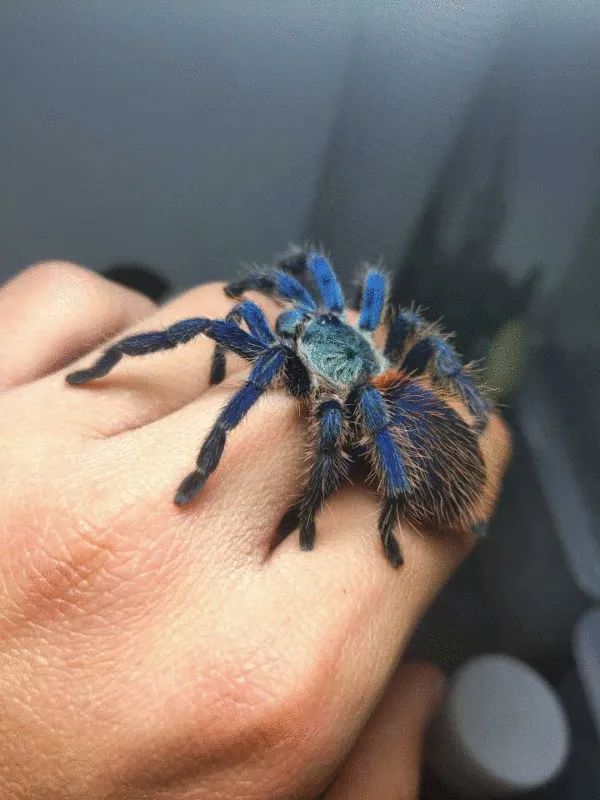
Brazilian Blue Tarantulas are endemic to a specific region of Brazil, primarily inhabiting the Cerrado, a vast tropical savanna. Their natural habitat is characterized by a mosaic of grasslands, woodlands, and scrub forests, offering diverse microclimates and sheltering locations. Within this environment, these tarantulas typically burrow in the ground or utilize existing crevices for shelter, seeking refuge from predators and extreme weather conditions. The Cerrado region’s seasonal changes, including periods of drought and heavy rainfall, significantly influence the tarantulas’ activity patterns and behavior. Understanding their habitat is essential for recreating suitable conditions in captivity, which promotes their health and longevity. They require specific humidity, temperature, and substrate conditions to thrive. The environment also plays a crucial role in their ability to hunt and reproduce.
Is the Brazilian Blue Tarantula Poisonous?
The term “poisonous” is often incorrectly used when referring to tarantulas. Instead, tarantulas are venomous. This means they inject a toxin through fangs, whereas poisonous creatures release toxins through touch or ingestion. Therefore, the Brazilian Blue Tarantula is not poisonous; it is venomous. Their venom is a complex mixture of proteins and enzymes, designed to immobilize prey. However, the effects of their venom on humans are generally not considered life-threatening. Understanding this distinction is essential to dispel common misconceptions about tarantula bites and their potential health impacts.
Understanding Venom vs. Poison
The difference between venom and poison is crucial for understanding the risks associated with animals like the Brazilian Blue Tarantula. Venom is actively injected into a victim through specialized structures such as fangs, stingers, or spines. Examples of venomous animals include snakes, spiders, and bees. Poison, on the other hand, is a toxin that is absorbed or ingested, causing harm through contact or consumption. Examples include certain plants, toads, and some types of mushrooms. This distinction highlights that the Brazilian Blue Tarantula, like all tarantulas, delivers its defensive or predatory toxins through a bite, making it venomous. This crucial differentiation guides our understanding of safety precautions and potential health responses.
Venom Composition and Effects
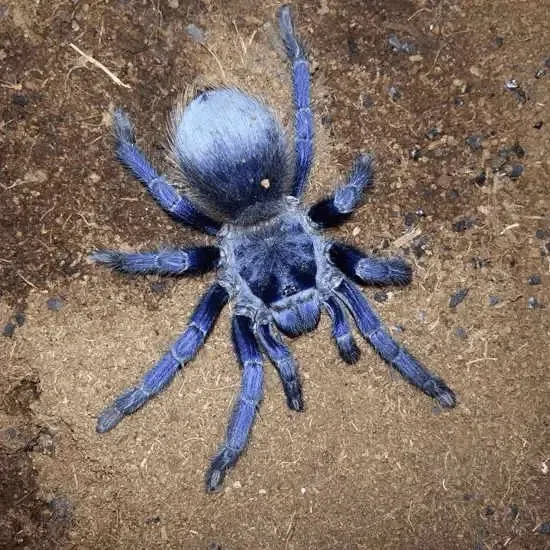
Tarantula venom, including that of the Brazilian Blue Tarantula, is a complex mixture of various compounds, primarily proteins and enzymes. These compounds are designed to incapacitate prey, breaking down tissues and disrupting the nervous system. The specific composition of the venom can vary between species and even between individual spiders. In humans, a tarantula bite typically results in localized pain, redness, and swelling at the bite site. Other symptoms may include muscle cramps, increased heart rate, and nausea. Severe reactions are rare. The effects of the venom are typically mild, and the symptoms often subside within a few hours or days. It’s important to note, that the intensity of the effects can vary depending on the amount of venom injected and individual sensitivity.
Top 5 Facts about Brazilian Blue Tarantula Venom
Fact 1 The Brazilian Blue Tarantula’s Venom Is Mild
Compared to some other venomous creatures, the venom of the Brazilian Blue Tarantula is considered relatively mild. Its primary function is to subdue prey rather than to pose a significant threat to larger animals, like humans. The effects of a bite are often limited to localized symptoms, such as minor pain and swelling at the bite site. This characteristic makes them a popular choice among tarantula keepers, as the risk of a severe reaction is low. However, it’s important to recognize individual sensitivities and take appropriate precautions if bitten.
Fact 2 Bites are Uncommon
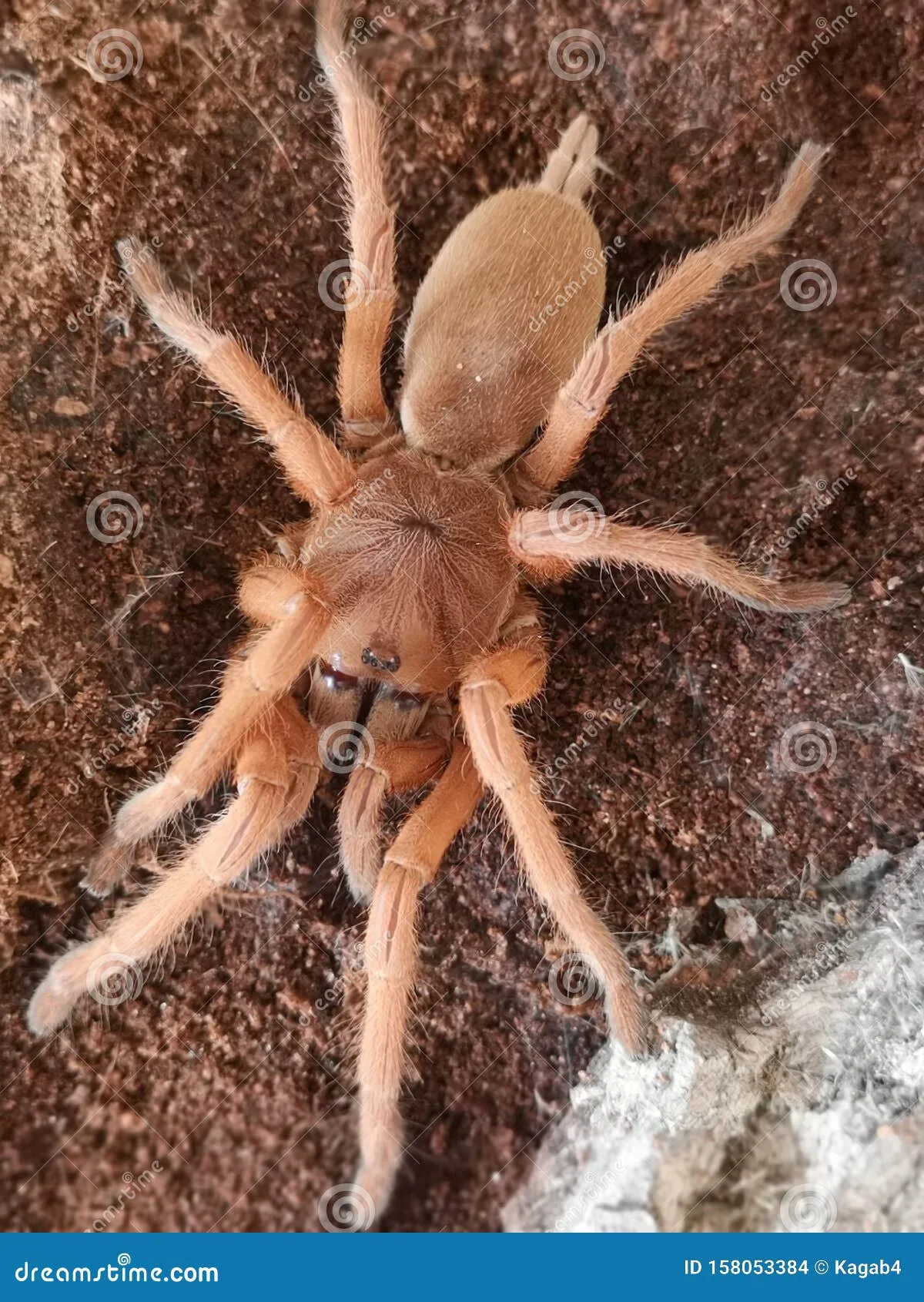
Brazilian Blue Tarantulas are generally docile creatures and are not prone to biting unless they feel threatened or provoked. Bites typically occur when the tarantula feels its life is in danger, such as during mishandling or improper care. Safe handling practices, a calm environment, and respect for the animal are key to preventing bites. Responsible tarantula keepers understand the importance of minimizing stress for their pets, reducing the likelihood of defensive behavior. Maintaining a proper environment and understanding the tarantula’s needs will greatly reduce the chance of being bitten by one.
Fact 3 Allergic Reactions are Possible
Although the venom of the Brazilian Blue Tarantula is considered mild, allergic reactions are possible in some individuals. Allergic reactions can range from mild symptoms like hives and itching to more severe reactions, such as difficulty breathing or anaphylactic shock. Anyone who experiences symptoms of an allergic reaction after a tarantula bite should seek immediate medical attention. It is essential for individuals with known allergies to venom or insect bites to exercise extreme caution when handling tarantulas and to have necessary medications, like an epinephrine auto-injector, readily available.
Fact 4 Not Medically Significant
In most cases, a bite from a Brazilian Blue Tarantula is not considered medically significant, meaning it does not usually require hospitalization or extensive medical treatment. The symptoms are typically manageable with over-the-counter pain relievers and antihistamines, such as applying an ice pack and keeping the bite area clean. Serious complications are very rare. However, it is always wise to monitor any bite closely for signs of infection or an allergic reaction. If symptoms worsen or new symptoms develop, consulting a healthcare professional is recommended.
Fact 5 Research on Venom is Ongoing
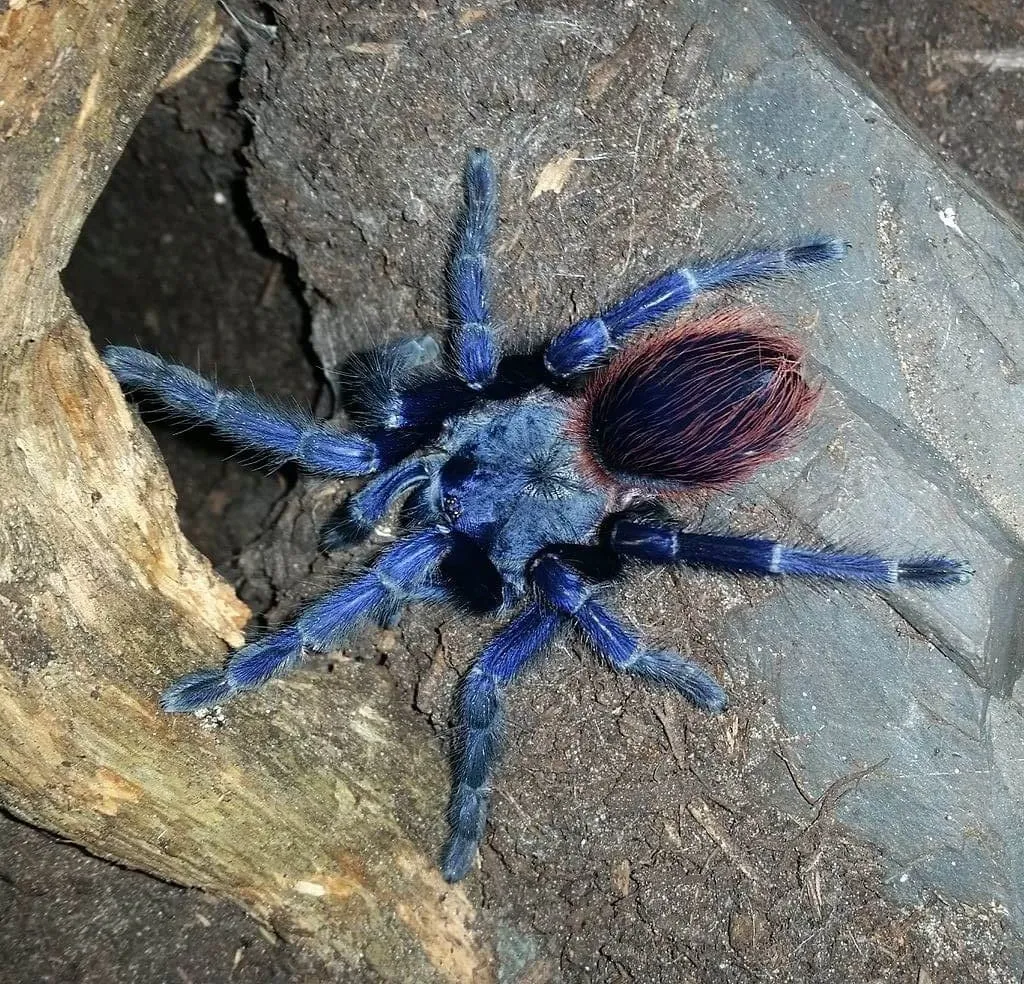
Scientists continue to study tarantula venom, including the venom of the Brazilian Blue Tarantula. The goal is to understand its composition and effects better. This research has potential applications in medicine and pharmacology. Researchers are exploring how certain venom components might be used to develop new drugs or therapies. Ongoing studies will provide further insights into the venom’s properties and effects, which could lead to a better understanding of arachnid biology and improved treatment options in the future. These studies also help to refine safety protocols and provide better advice for those working with tarantulas.
Safety Precautions and First Aid for Bites
To minimize the risk of a bite, handle Brazilian Blue Tarantulas with extreme care. Avoid sudden movements, and never handle them when stressed or agitated. If you are bitten, remain calm. Clean the bite area with soap and water. Apply a cold compress to reduce swelling and pain. Monitor yourself for any signs of an allergic reaction. Seek medical attention if symptoms are severe or worsen. Knowing the right safety measures and first aid steps will help reduce potential health issues and provide a safe environment.
What to Do If Bitten
If bitten by a Brazilian Blue Tarantula, the first step is to remain calm and move away from the tarantula to ensure your safety. Immediately clean the bite area thoroughly with soap and water. Applying a cold compress or ice pack can help reduce pain and swelling. If the pain is intense, over-the-counter pain relievers, like ibuprofen or acetaminophen, can be used. Monitor the bite site for signs of infection, such as increased redness, swelling, or pus. Seek medical attention if you experience any symptoms of an allergic reaction, such as difficulty breathing, swelling of the face or throat, or dizziness. Prompt and appropriate action is vital for a quick recovery.
Preventative Measures

The best approach is to prevent bites. Always handle your Brazilian Blue Tarantula with caution and respect. Avoid unnecessary handling. Ensure your enclosure is secure and the environment is safe. When handling, use tools such as tongs or a clear container. Never put your hands directly into the enclosure without fully understanding the tarantula’s mood. Educate yourself about tarantula behavior and be aware of the signs of stress or aggression. By taking these steps, you can significantly reduce the chances of being bitten and create a safe environment for yourself and your pet. Regular enclosure maintenance also minimizes the risk of encounters, keeping the tarantula calm and preventing it from feeling threatened.
Brazilian Blue Tarantula Keeping and Safety
Keeping a Brazilian Blue Tarantula as a pet can be a rewarding experience, but it requires responsible care. Proper setup is vital for the health and safety of your tarantula. The enclosure must be secure and of a suitable size, taking into account its burrowing habits. The environment should provide the proper temperature, humidity, and substrate. The tarantula should have access to a clean water source and be fed a diet of appropriate insects. Regular cleaning of the enclosure is crucial to prevent the buildup of waste and reduce the risk of diseases. By following these guidelines, you can ensure your tarantula’s well-being and minimize any potential risks to yourself. Proper research and preparation before acquiring a tarantula are key.
Safe Handling and Care
Safe handling practices are essential to prevent bites and ensure the safety of both the tarantula and the handler. When handling, do so only when necessary and with a calm and steady demeanor. Use tools like tongs or a clear container. Avoid sudden movements, which may startle the tarantula. Never force the tarantula to move, and allow it to walk onto your hand rather than grabbing it. Always wash your hands thoroughly after handling. Proper care also includes providing the right environmental conditions, such as temperature, humidity, and appropriate substrate for burrowing. A healthy, well-cared-for tarantula is less likely to feel threatened and more likely to be docile. Regular monitoring and observation are important to identify any health issues or signs of stress.
Conclusion
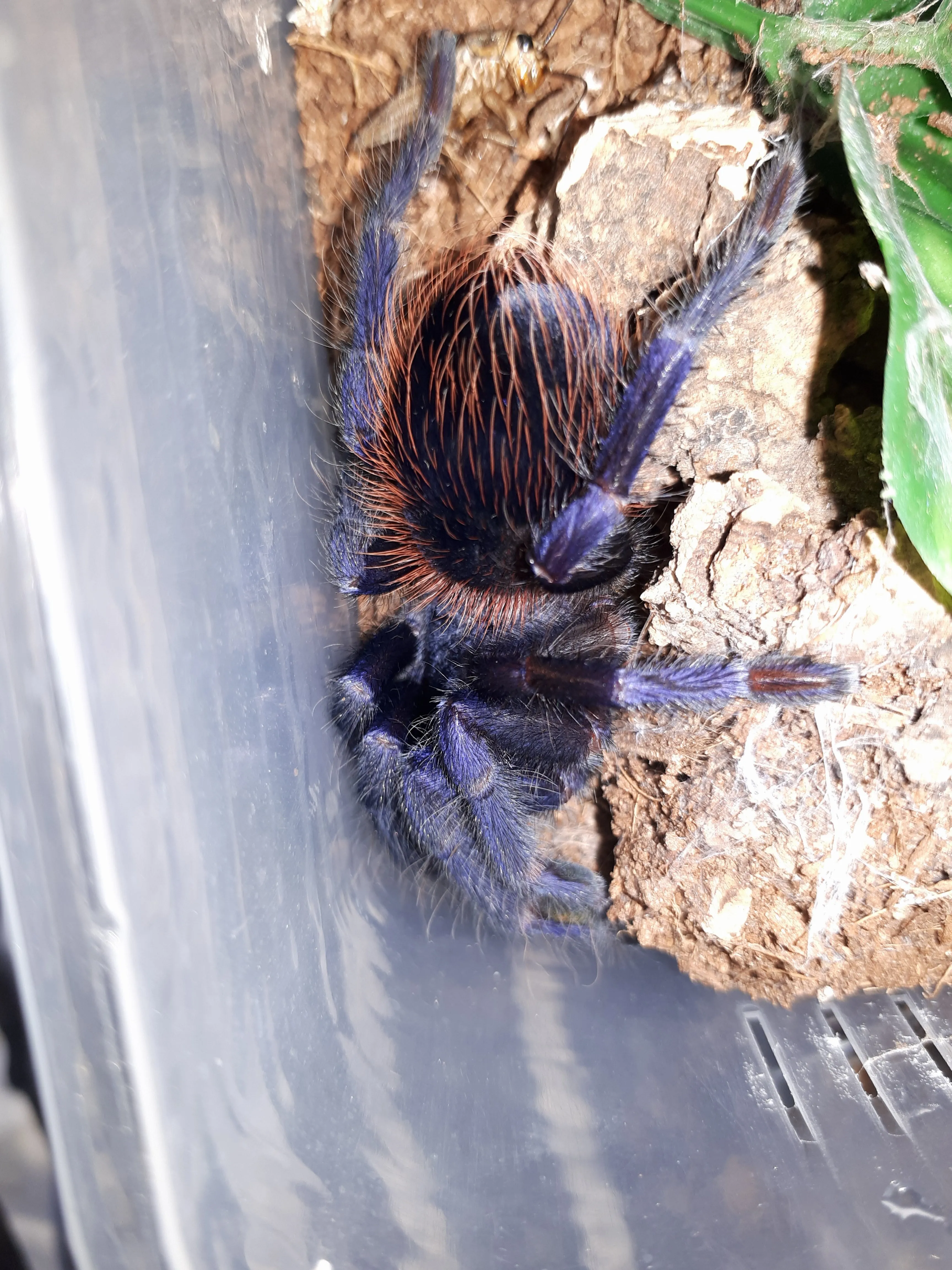
In conclusion, the Brazilian Blue Tarantula is a fascinating species, and while it is venomous, its venom is considered relatively mild. This means that the primary concern is not the toxicity of the venom itself but rather the potential for an allergic reaction and the need for responsible handling. By understanding the difference between poison and venom, taking necessary safety precautions, and providing appropriate care, you can safely keep and enjoy these beautiful creatures. It is essential to be well-informed, respect the tarantula’s needs, and prioritize your safety. With proper knowledge and precautions, the Brazilian Blue Tarantula can be a rewarding pet for experienced keepers.
